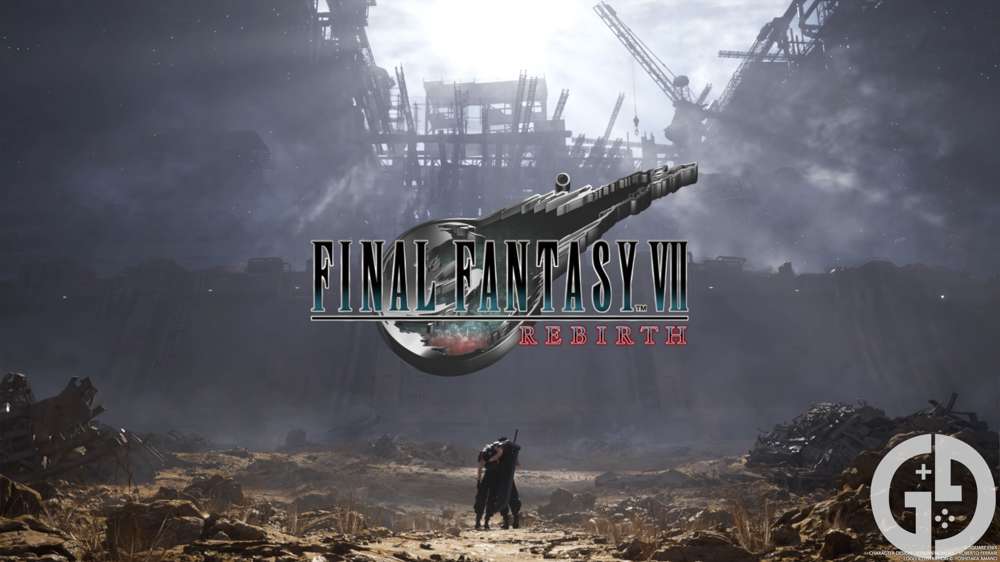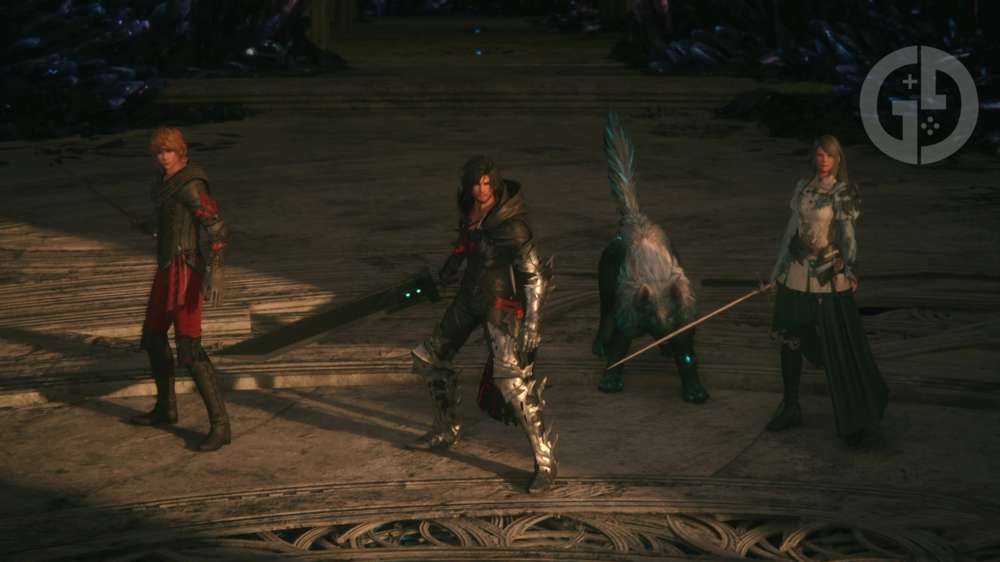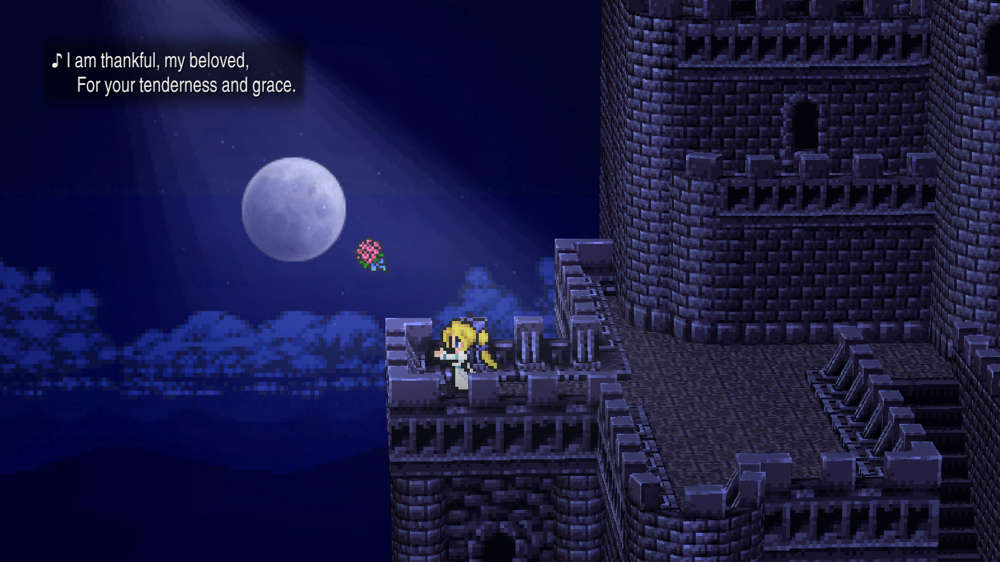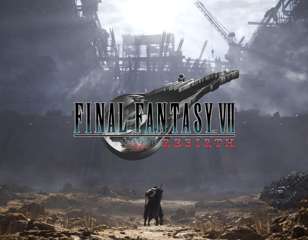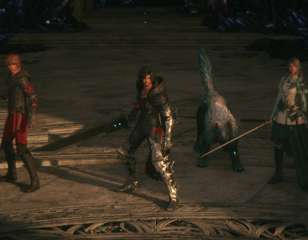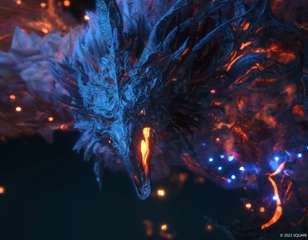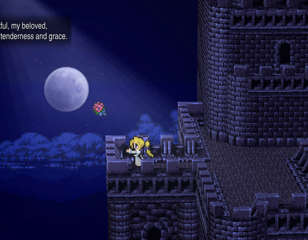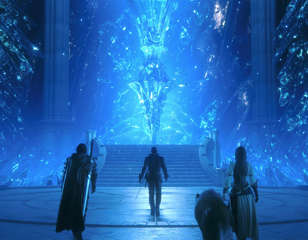Final Fantasy XVI review: Eikonic franchise summons a storm
Final Fantasy XVI is a truly special game that, while not without its issues, had me in awe of its frequent moments of absolute spectacle and emotion. Its consistently engaging narrative overflows with deep political intrigue and the lack of an in-combat party system did not by any means detract from the connection that you build with the game's wide cast of memorable characters and its world. Despite the weight of expectations from a series full of gaming hallmarks, Final Fantasy XVI stands tall as an outstanding experience that you won't want to miss out on.
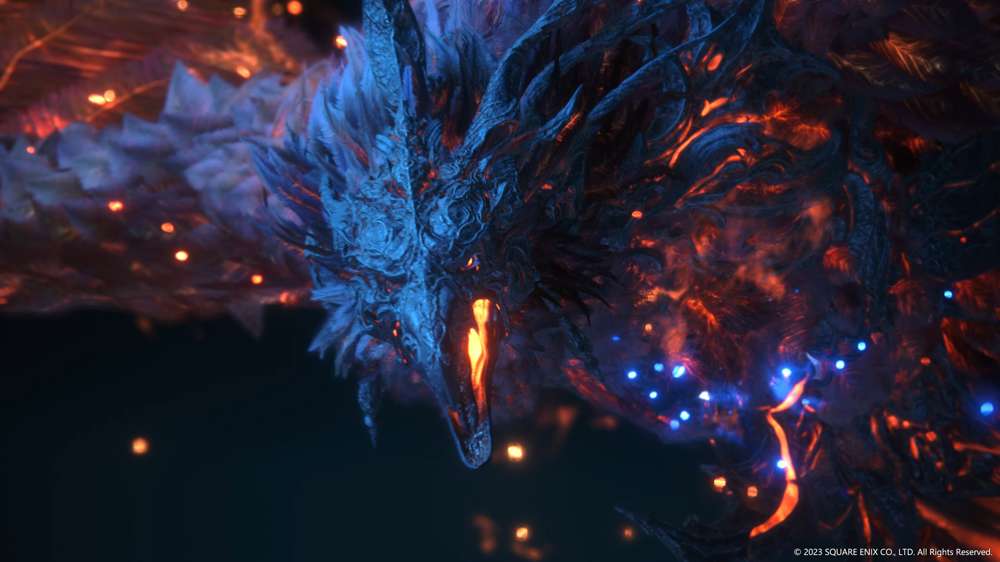
Final Fantasy XVI is a truly special game that, while not without its issues, had me in awe of its frequent moments of absolute spectacle and emotion.
Its consistently engaging narrative overflows with deep political intrigue and the lack of an in-combat party system did not by any means detract from the connection that you build with the game's wide cast of memorable characters and its world.
Despite the weight of expectations from a series full of gaming hallmarks, Final Fantasy XVI stands tall as an outstanding experience that you won't want to miss out on.
Images via Square Enix
Platform(s)
PlayStation 5
Released
22/06/2023
Developer
Square Enix
Publisher
Square Enix
Final Fantasy is a long-running series, to say the least. Defined perhaps by nothing and everything at the same time, it has produced some of gaming's greatest iconography and remains at the heart of the medium's history.
It has now been nearly seven years since the last mainline Final Fantasy game, and while Final Fantasy XIV goes strong and the Final Fantasy VII Remake universe continues to expand, there are very few things that can capture excitement quite like another big numbered entry.
Thus, enter Final Fantasy XVI - a proposed return to the fantasy of old, but with a new, more 'grounded' approach and another revision to the series' mechanics. While there are a number of notable stumbles in the process, Final Fantasy XVI once again provides an experience that will not soon be forgotten, spearheaded by a surprisingly excellent combat system and a saga well worthy of its namesake.
GGRecon Verdict
Final Fantasy XVI is a truly special game that, while not without its issues, had me in awe of its frequent moments of absolute spectacle and emotion.
Its consistently engaging narrative overflows with deep political intrigue and the lack of an in-combat party system did not by any means detract from the connection that you build with the game's wide cast of memorable characters and its world.
Despite the weight of expectations from a series full of gaming hallmarks, Final Fantasy XVI stands tall as an outstanding experience that you won't want to miss out on.
Won't somebody please think of the crystals?
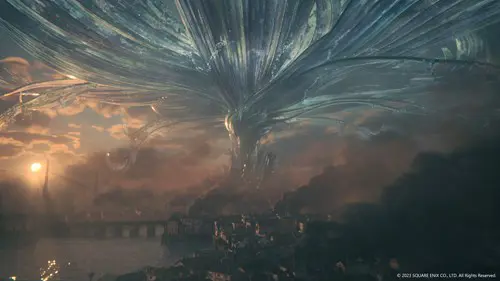
Moving away from the more modern approach of its predecessor, Final Fantasy XVI takes players back to the classical high-fantasy that defined the first five entries within the series. We have kingdoms laden with imposing castles and grandiose cities, alongside dukes, ministers, and kings warring for control in an ever-decaying land.
While the lives of those at the top might appear full of splendour, the world of Valisthea is quickly succumbing to an ever-encroaching decay that cannot be fought or stopped. Land that was previously rich with aether - a magical energy supplied with the crystals - is being sapped dry, leaving people and monsters alike with no home to call their own.
This is key to Final Fantasy XVI's central conflict between those that employ the aether of the crystals, and the people that can naturally cast magic - otherwise known as bearers and dominants. Those who are born with the flow of aether naturally within their bodies are outcasts from society and branded with marks, leaving them subservient to their crystal-wielding masters.
Furthermore, there exists eight dominants within Valisthea, who wield the power to transform into titanic god-like Eikons that can win wars and wipe out entire armies on their own. Many of those that wield these Eikonic powers find themselves in a power struggle, where they are both vital to their nations might but valued no more than a tool to deliver destruction.
At the heart of this political struggle lies our main character Clive Rosfield - the son of a Duke whose seeming lack of Eikonic powers has seen his role within the Rosarian Duchy diminished. A tragic incident near the start of the game leads him on the search for revenge, but the world of Valisthea has far more in store for Clive on his travels.
A narrative as grand as a kingdom
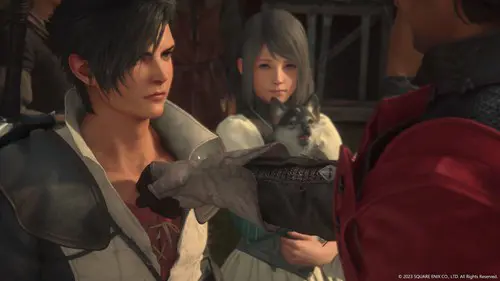
One of the most impressive aspects of Final Fantasy XVI that you will realise after completing the story is how much its narrative evolves over the course of the game. What once began as a drive for vindication quickly morphs into a far greater mission - one which, at the heart, is an aspiration for a better world where people can live within their own means and determine their own will.
This spans near-on two decades of Clive's life, as his role and desires within the kingdom expand, meeting challenging foes and a memorable cast of allies along the way. It is unsurprising considering the history of the series, but Final Fantasy XVI very much holds the same emotional weight and status as many of the other landmark titles, and it is incredibly impressive how much the game is able to make you feel - especially within its final act.
Being the first game in the series to ditch the traditional party system, Final Fantasy XVI does not suffer in the slightest when it comes to your connection to the supporting cast. Even side characters become a crucial part of your network, and your understanding of the wider world is very much supported by this. Dion Lesage, for example, has functionally very little to do with the core narrative for a large section of the game, yet you feel ever-connected to him throughout with supremely engaging cutaways that keep you informed of the goings-on within Valisthea.
Is this just fantasy?
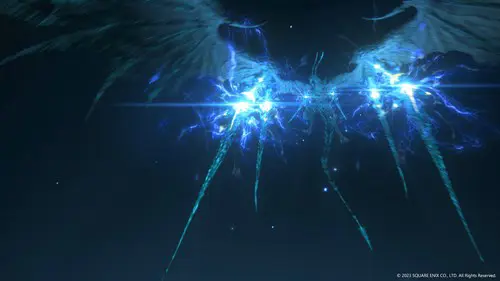
One of my biggest worries going into the game was the conception of Final Fantasy XVI as 'more grounded' than previous entries within the series. Despite the move to its more traditional high-fantasy setting, so much of what was shown prior to the game's release seemed to focus on a realistic approach to the characters and the story at large, and I was afraid that this would dampen the grand creations that the series has become so well known for.
Thankfully, this could not be further from the truth, as the game fully leans into high-fantasy themes, creating some really quite incredible imagery within the latter half of the game especially. It sounds silly to think that a game so imbued with magic might shy away from spectacle, but Clive's adventure moves through absurdity and dark fantasy alike.
It almost captures the best of both worlds - where we are able to explore more complex topics in greater detail without sacrificing any of the whimsy and spectacle that more grounded narratives would otherwise shy away from.
The influence of medieval-adjacent media in the past decade is clear, with Game of Thrones being perhaps the easiest to point towards, much like how the influence of Star Wars is abundantly clear upon Final Fantasy XII. However, these merely serve as a framework for the game's larger high-fantasy aspirations, making truly something of its own and worthy of the Final Fantasy name.
Linked to this also is the vast political nature of the game which is perhaps more of what you would expect from games like Final Fantasy Tactics, Tactics Ogre, or even the recent Triangle Strategy. You are constantly made aware of the movements and actions of the six kingdoms, and while a little challenging to keep up with in the beginning, this makes for a far more involved and esoteric understanding of Valisthea that only benefits your appreciation of the story.
Cutscene confusion
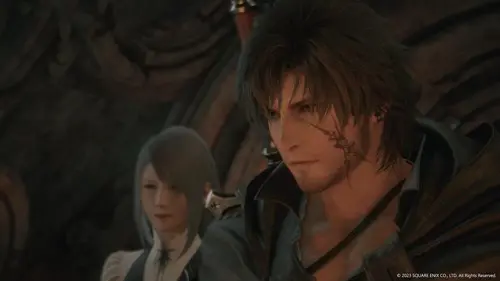
It is no exaggeration to say that the cutscenes in Final Fantasy XVI are some of the greatest that I have seen in any game. From the more intimate character-focused scenes, to the frankly mind-blowing boss fight cinematics, there is really no shortage of bombast throughout its runtime.
However, this unfortunately does not tell the whole story. Cutscenes in Final Fantasy XVI are primarily split into three types: fully animated story-critical scenes, in-game standard conversations, and then everything else. What befalls everything else boils largely down to characters awkwardly transitioning between stilted animations that make them look borderline animatronic.
For a game that looks so impressive at so many points throughout, it's more than a little jarring to be brought back to reality with cutscenes that are dull to watch and actually detract from the characterisation.
For a game - and more broadly a series - that puts so much emphasis on its narrative, it is frustrating to see so much of the story told through this way, and it made me only yearn more for the moments when the game was allowed to shine in all of its glory.
Stop trying to make fetch happen
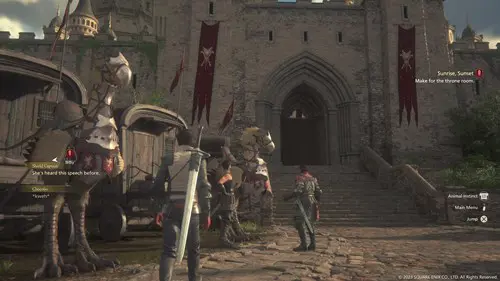
This dissatisfaction unfortunately bleeds into a signification portion of the quest design too, with far too many of both the main and side activities boiling down to busywork. Of course, Clive's journey can't always take him from Eikon to Eikon, but it felt like whiplash sometimes being pulled from the heavens after an outstanding boss fight, only to have to go and fetch materials for someone's pet project.
I stopped doing the standard side quests entirely after the first couple when I quickly realised that this is all they are, but this regrettably bleeds into the main narrative too and can affect the pacing quite dramatically.
Far too often you make your way over to a new place to find a mysterious character, only for them to always have one menial task that they need help with before they can aid you in return. Heading a thousand yards east to dispatch some grunt-like monsters got both predictable and tiresome quite quickly, yet the game kept pulling it out of its sleeve like the world's most demanding magician.
Once you embark on the more story-crucial missions things become far more focused and driven, but it almost feels MMO-like in its quest design otherwise, which is fine in isolation but not when you're battling with the supposed urgency of a decaying world. Thankfully, combat helps alleviate even the most basic of encounters.
Conjuring magic with combat
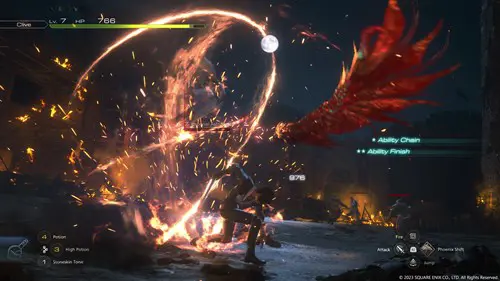
As a turn-based disciple, the prospect of the Final Fantasy series moving towards a real-time action-focused combat system has been a point of much frustration. I didn't gel with the approach taken within Final Fantasy XV, and I was apprehensive to see this approach continue in some form into the latest entry.
However, Creative Business Unit III - and perhaps, more specifically combat director Ryota Suzuki - has managed to capture a remarkable sense of action within the battles here, with a combat system that is remarkably malleable and multi-faceted.
While you start out with only a handful of abilities, far more become available throughout the course of the narrative that can completely change the way you approach each fight. You are free to customise and create a perfect loadout of skills to suit how you want to play best, and combining them creates an engaging flow to each encounter.
Furthermore, the game more or less completely forgoes the rather trite progression of new skills before more powerful, as each ability that you acquire becomes an expansion to your repertoire instead of a replacement for redundancy. That is of course not to say that the abilities that you obtain are not strong or exciting, but instead that you never feel like you need to replace what you are enjoying already for fear of its strength lacking.
Feeling Eikonic
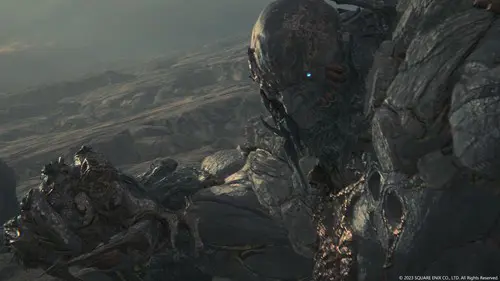
Where the game truly exceeds expectations and transcends into something really special, however, is within the boss fights - and especially those which make use of the new Eikon encounters.
You really have to pull out all of the stops when you're fighting one of the game's many tough foes, employing your best dodging skills and perfectly managing your chosen set of abilities to maximise your damage.
A lot of the bosses have a wide variety of dangerous physical attacks that you will have to watch out for, but one of the most engaging aspects of these fights are the almost MMO-esque magic attacks that require you to be very deliberate with your positioning.
It almost feels taken straight out of Final Fantasy XIV - which is, of course, no surprise considering some of the personnel behind the game - and it works excellently to deviate from the standard action combat formula. So many of the later bosses especially become more like a maze full of traps that you have to navigate, as opposed to a standard fight that might have otherwise worn out its welcome.
Where Final Fantasy XVI really reaches the outer stratosphere - both figuratively, and in some cases literally - is with the aforementioned Eikon fights. These encounters ramp up the scale so dramatically, creating a spectacle I have scarcely seen in a game otherwise. There is a lot of variety within these encounters too, as the game creates a number of different set pieces that always feel exhilarating to play through.
One aspect where some players might find issue, however, is within the cinematic strikes feature - which essentially boils down to quick time events during the mid-fight cutscenes. All in all, I didn't find these too much of an issue as they added some engagement to the already spectacular cutscenes and often marked a transition between fight phases, but they could very easily feel a little outdated and rudimentary to some players who feel like the action is being taken away from them.
I (don't) want to hold your hand
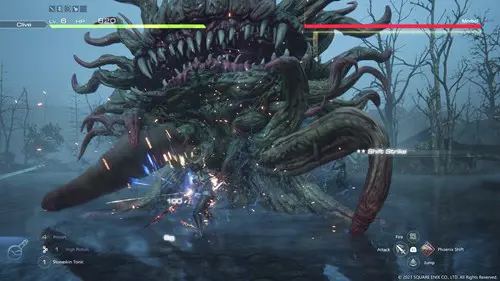
Despite how flexible Final Fantasy XVI might seem with its approach to its combat and abilities, it is frustratingly linear in its quest design. I have no problem with linearity in premise, and the game does even 'open' up its areas in many ways, but it gives you far too much direction whenever you actually take on a quest.
Giant quest markers cloud the screen giving you no independence in your own decision-making, to the point where you almost don't need to actually pay attention to what is actually going on. I would have infinitely preferred it if the game actually had any faith in my own capacity to figure things out - even if it was just the case of putting something on the map and letting me get there on my own terms.
On the contrary, however, the Hunt Board system could not have been more perfect as an antidote for this problem. Across the course of the game, new hunts are posted on the board, challenging you to seek them out and take them down. These hunts do not operate as quests, and often only have a vague description of their location and capabilities, leaving it up to you to figure the rest out.
Not only did you have the thrill of fighting a wide variety of exciting and challenging bosses, but the adventure of actually finding the monster too. Furthermore, you can - and often will - stumble upon these hunts when travelling out in the wild, and there are few things more simultaneously exciting and exhilarating than the short cutscene that pops up before the fight commences.
Framerate woes
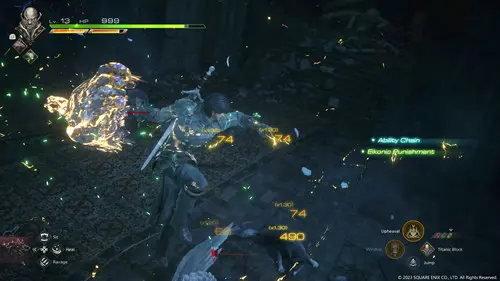
Rough is probably the best way to describe the performance in Final Fantasy XVI. We spent the majority of our playtime on the supposed 'Frame Rate' mode, but this scarcely hit what is presumed to be its 60fps target, with a number of instances where it felt like it dipped below 30 even.
It proved to be especially troublesome in towns and populated areas, although it did largely hold up within combat, which was very much appreciated. Many players might also struggle with the severe amount of motion blur that has been applied, as there is no way to turn it off and it is more than capable of causing motion sickness.
While a Day One patch might fix things altogether, our own personal experience of the game was far from smooth.
The game does look utterly fantastic throughout - and there are a number of instances where it stacks up among the best-looking games I've ever played - but this does of course come at a cost that some players might not want to compromise on.
On a more positive note, Final Fantasy XVI features some of the most impressive load times in recent memory, with functionally minimal load screens from booting up the game to travelling between zones. There is no seamless world for you to travel across, but it near enough feels like it due to how quickly the game transitions between fast travel points.
Theatre of Rhythm
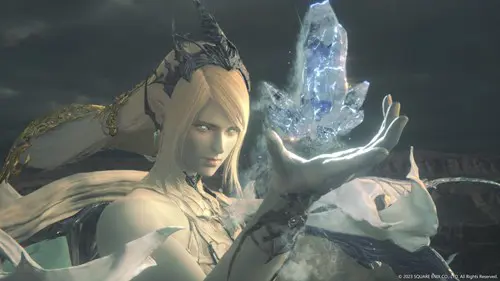
I would be remiss to not discuss the music within Final Fantasy XVI too, as it is an aspect that has defined the series almost as much as its grand narratives and constantly evolving gameplay systems.
It is nothing short of a delight to say that composer Masayoshi Soken's work on the game is among the best in the entire series, featuring a vast array of orchestrations that each convey so much emotion. The character motifs are a particular highlight, alongside the near-cosmic boss tracks which only further enhance the scale of each fight.
Lastly, each area has its own unique theme that drastically furthers the immersion and your connection to the world, rivalling even some of the Soken's best world themes from Final Fantasy XIV.
The Verdict
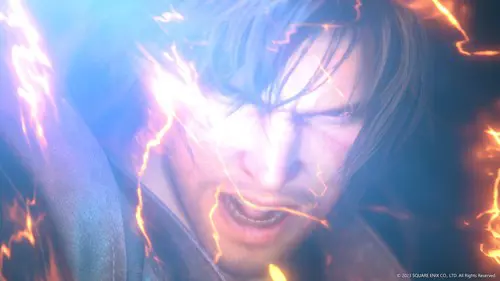
Final Fantasy XVI is a truly special game that, while not without its issues, had me in awe of its frequent moments of absolute spectacle and emotion.
Its consistently engaging narrative overflows with deep political intrigue and the lack of an in-combat party system did not by any means detract from the connection that you build with the game's wide cast of memorable characters and its world.
Despite the weight of expectations from a series full of gaming hallmarks, Final Fantasy XVI stands tall as an outstanding experience that you won't want to miss out on.
4.5/5
Reviewed on PlayStation 5. Code provided by the publisher.
Comments

